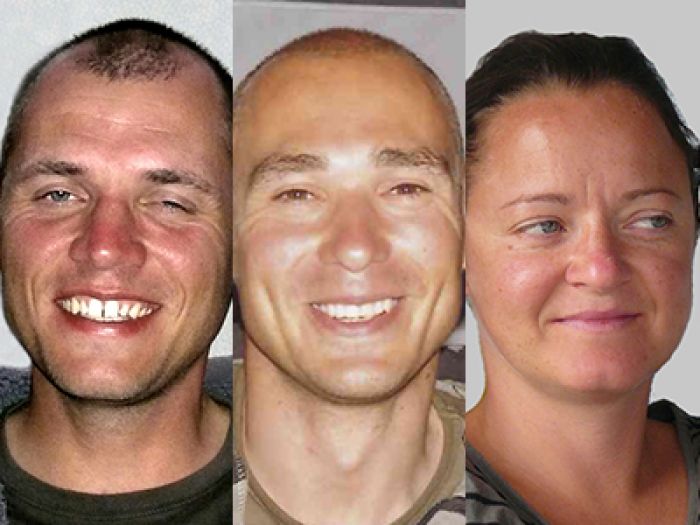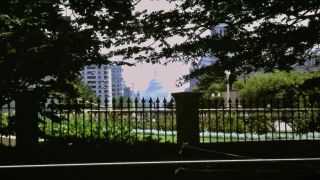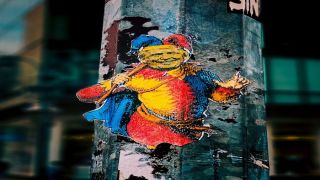National Socialist Underground - the mystery associated with Michele Kiesewetter Featured
- Written by
- font size decrease font size increase font size
 Böhnhardt, Mundlos, Zschaepe, BKA, 2011
Böhnhardt, Mundlos, Zschaepe, BKA, 2011
NSU - was the network significantly larger?
Probably.
Only 250 days of the 5000 days that the perpetrators lived underground could be roughly clarified.
One wonders where the trio was, the electricity consumption in the apartment, which was later blown up by Zschäpe in Zwickau, had that of a one-person household.
Were there any other hiding places or shelters for the trio?
That too is likely.
There are indications that more than just the trio around Beate Zschäpe, who was later accused before the State Security Senate in Munich, were involved in the crime against police officer Michèle Kiesewetter.
Even 12 years after the deeds, the motive for the shooting at the Theresienwiese in Heilbronn is still in the dark.
Had Kiesewetter perhaps unconsciously attracted the perpetrators? All one could say about this would be speculation.
There were many conspiracy theories, especially from the right milieu.
The quoted texts are from the report to the Federal Prosecutor General at the Federal Supreme Court
2 BJs 162/11-2 - VS - NfD
STA Heilbronn, Germany Az.: 16 UJs 1068/07
During the research for this article, we felt the tactics of the state to lay the cloak of silence over the cruel murder of the officer and the attempted murder of her colleague, over the entire NSU affair. The credibility of the state, especially concerning the so-called "deep state", should be based on this act of the right-wing terrorist group "National Socialist Underground (NSU)".
Ms Kiesewetter was a policewoman, young and had her life ahead of her. She had, as was usual at that age, relationships with men, but she was certainly not responsible for her fate.
It was not a tragic case of the murder of politically blinded perpetrators. Still, a long-planned action by right-wing terrorists, perhaps only to maintain the mission of "Inner Tension".
Incredible seemed the DNA assignments concerning the so-called "Phantom of Heilbronn", which haunted German laboratories for years and was later seen as an error in genetic analysis. The traces found at 40 crime scenes belonged to a worker who worked in a Bavarian packaging plant.
Now one might think that this was intentional - one person is travelling through Europe, the Phantom even appeared in a garden settlement in Austria and was involved in countless crimes since 1993 that no one could explain. At the time, the search was on for an unknown woman who was following this extraordinary trail.
For years the investigators of the SoKo parking lot were groping in the dark.
The accusations were particularly brazen, which Ms Kiesewetter made after her death and which made it particularly difficult for her to have a relationship with her colleagues.
What had happened?
On 25 April 2007, Kiesewetter, who comes by birth from Thuringia, and her colleague Martin Arnold stopped at the Theresienwiese car park in Heilbronn at around 1:55 pm with their emergency vehicle, a BMW 5-series estate car, GP-3464.
From his later statement to the investigators, the following picture of the minutes emerges: "Martin Arnold also remembered the entrance to the Theresienwiese and that they had parked backwards next to the brick building. They had eaten there and then he had smoked, and that in the vehicle, contrary to his statements in the previous interrogation, he had noticed a man whom he had seen in his right-hand exterior mirror. The stranger had passed between the building and the passenger side of the police car. It had not been a young man. At the same time, Michèle said: "Not even here you can have peace, he probably wants information".
Further interrogations and investigations in connection with the crime against Mr Arnold, even once under hypnosis, revealed additional:
"They had entered the Theresienwiese from the Frankfurter Straße and parked backwards next to the power distribution house. They had eaten in the vehicle and then smoked a cigarette. He had talked to Michèle about their further use by the police. The doors of the car were closed, the windows on both sides open. In the rear-view mirror, he then saw a man approaching the vehicle from behind on the passenger side. The man had been middle-aged, dressed in dark jeans, black shoes and a short-sleeved shirt. The man had dark hair, did not wear glasses and had no beard. Michèle said: "Someone wants information". He then instinctively looked at her side and saw a male person at the height of the B-pillar. He could only see the upper part of his body and the mouth.
The man was dressed in a red/white chequered short-sleeved shirt. Michèle had said something else to the man.
The man was 170-180 cm tall. He had an average figure, wore a light-coloured shirt with a button facing. Just before he lost his memory, he turned to his right side. A black stripe ran through the red and white patterned shirt. The person on the driver's side had greyish-white arm hair and therefore must have been over 40 years old.
That didn't fit on Böhnhart or Mundlos, the co-offenders of Zschäpe. The trio of the NSU.
So who was the person?
An identikit picture was made according to the victim's information, Arnold.
Why wasn't the sketch published?
Second part: NSU - the deep state? The contradictions of Heilbronn














